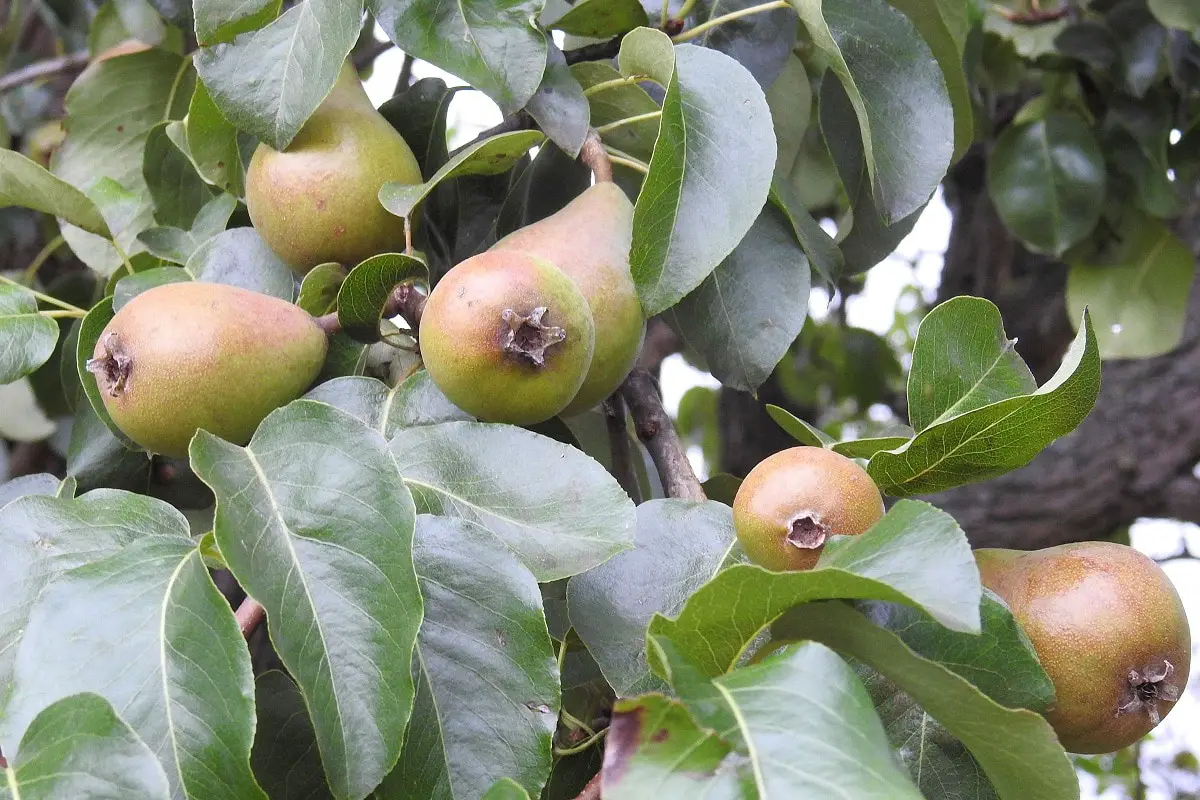

One of the trees most appreciated for its delicious and nutritious fruits is the pear tree. It is a type of tree that belongs to the genus Pyrus and to the Rosaceae family. This means that it is related to the apple tree. However, like many other fruit trees it is usually affected by pests and diseases. The pear tree diseases They must be treated in time if we do not want the fruits to be damaged.
Therefore, in this article we are going to tell you everything you need to know about pear tree diseases and how we should treat it.
Key features


In order to know which pear tree diseases usually affect, you must first know the characteristics of this tree. It is native to the temperate climates of Europe and Africa. Its cultivation has spread thanks to the use and commercialization of its fruits. And there are numerous varieties that are known as a result of various selection processes from wild pear trees and Asian pear trees. They are trees that can measure between 10 and 20 meters in height depending on the variety that we are growing. They are specimens that need humid and cool climates but have quite warm summers.
The most appropriate growing areas are those that are open and are not suitable for more closed valleys where large amounts of moisture are stored. One of the characteristics that the soil needs to be able to have good results is to have good drainage. Drainage is the ability of the soil to filter water and not store it. In the event that both rain and irrigation water are stored, it can lead to root problems and rotting of the fruits.
The roots of the pear tree are woody and quite deep. The trunk is straight and has a brownish-gray bark that is completely cracked. Its flowers are presented in the form of corymbs and have 5 white petals. Its stamens are slightly purple in color. You have to know that the flowers are hermaphroditic type.
The pear is the fruit that, along with the apple, is one of the most appreciated and consumed in most of the world. It is driven by its delicate flavor but for its nutritional properties it takes the prize. It is rich in B complex vitamins that help regulate the nervous system, improve the digestive system and strengthen the heart muscle. On the other hand we have vitamins of group A and C and minerals such as calcium, phosphorus, magnesium, potassium and copper. It is usually eaten fresh as a dessert and is also marketed in preserves, canned with syrup and lightly cooked for making desserts and compotes. It is very frequently used for the manufacture of jams.
Pear tree pests and diseases


Pests
Both the pear tree and the apple tree are quite susceptible to contracting pests and diseases. There are some main pathologies which are the ones that are most frequently found. We are going to divide which are the pests and diseases of the pear tree.
What can be found more easily are mites. Being polyphagous insects, it is a pest that appears on the pear tree frequently. The symptoms revealed by this pest are dark, brown or deep red spots.
San Jose louse
The San José louse develops in late winter after hibernating. With the arrival of heat, this pest can be easily observed visually. It causes diverse damages in the fruits and as a consequence its commercialization is reduced. It can be seen with the naked eye since it has purple spots on the leaves or on the nerves of the leaves. There are also circular reddish pits on the fruits.
Pear Psila
If it is observed with a magnifying glass it can be distinguished from the rest of the pests, since in adult state it has the form of lobster. In areas where there are high temperatures of over 35 degrees, we find a reduction in the pest’s affection, so the effects are less. It can be seen with a sticky appearance on the leaves and it originates from the honeydew excreted by nymphs.
Fruitfly
It is another of the pests that attack the pear tree. The activity of this fly begins in the spring time with the arrival of heat. The year is produced directly in the pear by the bite of the female. You can see the consequences since various holes are created that turn yellow and brown. The treatment for the fruit fly is applied with a frequency of more or less than 7-10 days with the use of insecticides.
carcocapsa
It usually measures only between 1.5 and 2 centimeters, being the male of a smaller size than the female. The damages that this tree produces are holes in the fruit and cause destruction and prevent the commercialization of said fruits.
Pear tree diseases


Let’s see now what are the different pear tree diseases.
Pear tree diseases: Mottled
Damage from this disease begins with the formation of wave spots on olive-green leaves. Over time, they turn black. If the disease is severe, defoliation of the tree occurs. All the spots appear on the fruits and are not used to be able to market them.
Pear tree diseases: Stemphylium
This type of disease causes damage directly to the leaves and fruits. The disease can be detected thanks to the drying of the leaves. It can also be identified by a general weakening of the tree and a reduction in the size of the fruits. The fruits usually show necrosis so it is very easy to identify this disease.
Pear rust
It is one of the last pear tree diseases and is identified by having reddish spots on the leaves. Over time these leaves will dry out and fall off. Dark colored spots may form on the fruit as a result of necrosis.
I hope that with this information you can learn more about pear tree diseases.

